gcse
Latest uploads at gcse. Looking for notes at gcse? We have lots of notes, study guides and study notes available for your school.
-
24
-
1
-
1
All courses for gcse
-
Business 1
-
Business studies 3
-
Cellular Respiration Summary Notes 1
-
CHEMISTRY 2
-
DNA Replication Notes 1
-
DNA Replication Notes For Health Students 1
-
DNA Structure for health students Notes 1
-
DNA Structure Notes 1
-
Elements in the human body for health students Notes 1
-
Elements in the Human Body Notes 1
-
English 1
-
GCSE 2
-
Meiosis for healthcare students 1
-
Meiosis Lecture Notes 1
-
Mitosis medical professional notes 1
-
Transcription and Translation Notes 1
-
Transcription occurs in the nucleus Notes 1
-
Transport Across Cell Membranes Notes 1
-
Transport Across Cell Membranes 1
-
Transport Across Cell Membranes notes for healthcare and medical student 1
Popular books gcse

Raymond Murphy • ISBN 9781108457651
Latest notes & summaries gcse
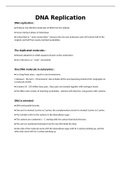
DNA Replication Notes For Health Students
- Interview
- • 3 pages's •
-
GCSE•DNA Replication Notes For Health Students
Preview 1 out of 3 pages
DNA Replication Notes For Health Students
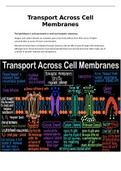
Transport Across Cell Membranes notes for healthcare and medical student
- Interview
- • 4 pages's •
-
GCSE•Transport Across Cell Membranes notes for healthcare and medical student
Preview 1 out of 4 pages
Transport Across Cell Membranes notes for healthcare and medical student
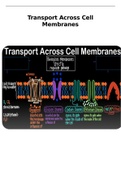
Transport Across Cell Membranes ( medical professional notes )
- Interview
- • 4 pages's •
-
GCSE•Transport Across Cell Membranes
Preview 1 out of 4 pages
Transport Across Cell Membranes ( medical professional notes )

Transport Across Cell Membranes Notes
- Interview
- • 3 pages's •
-
GCSE•Transport Across Cell Membranes Notes
Preview 1 out of 3 pages
Transport Across Cell Membranes Notes
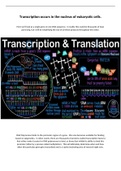
Here we’ll look at a single gene on one DNA sequence. In reality this could be thousands of base pairs long, but I will be simplifying the size of all these products throughout this video.
- Interview
- • 4 pages's •
-
GCSE•Transcription occurs in the nucleus Notes
Preview 1 out of 4 pages
Here we’ll look at a single gene on one DNA sequence. In reality this could be thousands of base pairs long, but I will be simplifying the size of all these products throughout this video.
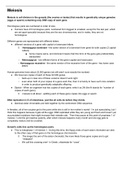
Meiosis is cell division in the gonads (the ovaries or testes) that results in genetically unique gametes (eggs or sperm) containing only ONE copy of each gene.
- Interview
- • 2 pages's •
-
GCSE•Meiosis Lecture Notes
Preview 1 out of 2 pages
Meiosis is cell division in the gonads (the ovaries or testes) that results in genetically unique gametes (eggs or sperm) containing only ONE copy of each gene.
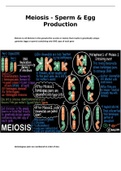
Meiosis is cell division in the gonads (the ovaries or testes) that results in genetically unique gametes (eggs or sperm) containing only ONE copy of each gene.
- Interview
- • 4 pages's •
-
GCSE•Meiosis for healthcare students
Preview 1 out of 4 pages
Meiosis is cell division in the gonads (the ovaries or testes) that results in genetically unique gametes (eggs or sperm) containing only ONE copy of each gene.

General Biology: Elements in the human body for health students Notes
- Interview
- • 2 pages's •
-
GCSE•Elements in the human body for health students Notes
Preview 1 out of 2 pages
General Biology: Elements in the human body for health students Notes
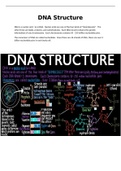
Nucleic acids are one of the four kinds of “biomolecules”. The other three are lipids, proteins, and carbohydrates. Each DNA strand contains the genetic information of one chromosome. Each chromosome contains 50 - 250 million nucleotide pairs.
- Interview
- • 4 pages's •
-
GCSE•DNA Structure Notes
Preview 1 out of 4 pages
Nucleic acids are one of the four kinds of “biomolecules”. The other three are lipids, proteins, and carbohydrates. Each DNA strand contains the genetic information of one chromosome. Each chromosome contains 50 - 250 million nucleotide pairs.
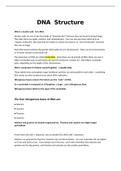
Nucleic acids are one of the four kinds of “biomolecules” (because they are found in living things). The other three are lipids, proteins, and carbohydrates. You may also see them referred to as “organic molecules” (because they are based on carbon structures), or “macromolecules” (because they are so huge)
- Interview
- • 2 pages's •
-
GCSE•DNA Structure for health students Notes
Preview 1 out of 2 pages
Nucleic acids are one of the four kinds of “biomolecules” (because they are found in living things). The other three are lipids, proteins, and carbohydrates. You may also see them referred to as “organic molecules” (because they are based on carbon structures), or “macromolecules” (because they are so huge)
